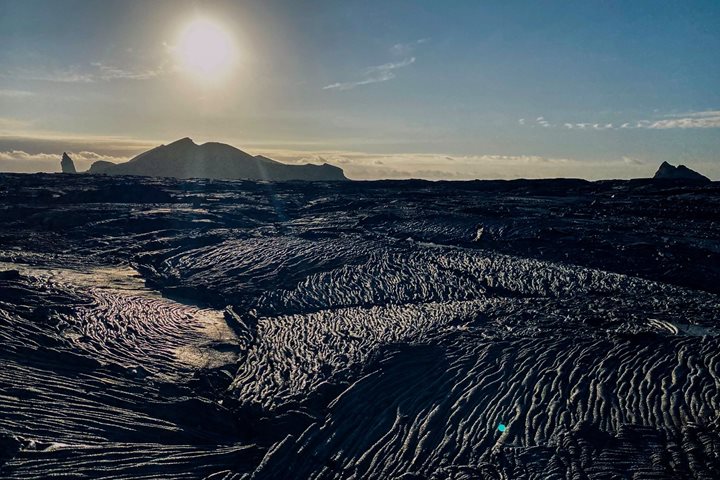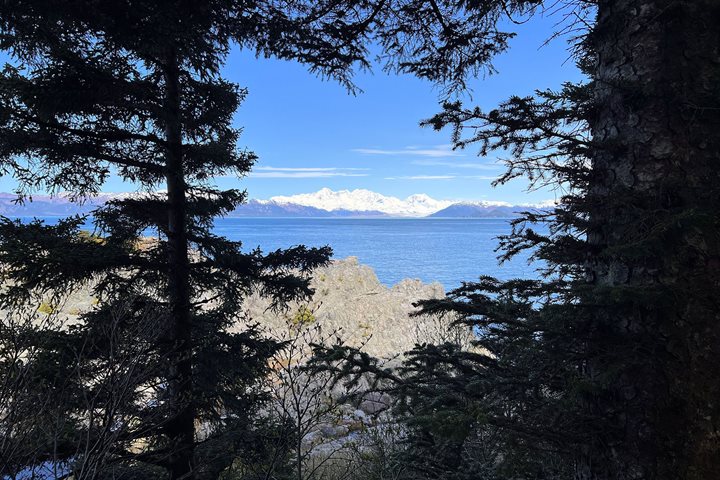Every travel photographer has a bucket list of dream destinations. There are a number of wild places in the world that are best visited by ocean-going expeditions on small passenger ships, and you don’t have to go half way around the world to find world-class photo opportunities. Among my favorite destinations that combine spectacular scenery with abundant wildlife are Southeast Alaska, Baja California (Mexico), and the Galápagos Islands (Ecuador). Get Inspired By Photos, Videos, Webinars, Stories, And Exclusive Offers. Sign Up
The best thing about traveling by ship is that you unpack for the duration of the voyage, so there’s no packing and re-packing. It’s a relaxing way to travel, as the ship takes you to new places every day. The ship serves as a platform for photography, and it’s high adventure getting out on the water and photographing wildlife and seascapes from inflatable Zodiacs.
Another great thing about ship-based travel is that you typically can bring the arsenal, unlike traveling in Africa, for example, where weight is critical when flying in small planes between camps. But you will still want to check the travel guidelines for connecting flights, pack efficiently, and bring only what is essential.
For more than 20 years I’ve been traveling the world with Lindblad Expeditions and National Geographic. It’s amazing how the way I travel has changed with the advent of the digital world of photography. Below is a discussion of my gear for ship-based expeditions.
Stellar sea lions, South Marble Islands, Glacier Bay National Park and Preserve, Southeast Alaska. Making sharp images from a moving ship requires shooting with a fast shutter speed and being prepared to capture the moment. It had been raining all day in Glacier Bay when the weather finally broke. The soft side light highlighted the steam coming off the animals. (Canon DSLR, 100-400mm, f/5.6 @ 1/1000, ISO 400)
Getting There
If there’s one rule of thumb for travel photographers, it’s to be sure to carry all your essential gear with you on the plane—from cameras bodies, lenses, and battery chargers to laptop computer and back-up hard drives. This way, if your luggage is lost or delayed, you still have the essential gear for making photographs. There are many camera bags on the market and I’ve tried just about all of them. For negotiating airports and getting to the port of embarkation, the best way to go is with wheels. My current favorite is the Tamrac SpeedRoller 5551, which has adjustable interior compartments and fits easily in the overhead of most commercial jets. My second carry-on bag is a Think Tank Urban Disguise 60 V2.0 shoulder bag that slips over the handle of the rolling bag. These two bags carry all my essential gear—a good thing since I spent 3 weeks recently on a Peruvian Upper Amazon voyage without my checked luggage, so don’t forget to also include a change of light-weight travel clothes in your carry-on bags.
Common dolphins in the Sea of Cortez, Baja California, Mexico. Panning with a moving subject at slow shutter speeds captures a sense of motion. In low-light situations it’s possible to create artistic images at speeds of 1/15 to 1/30 second with your camera set to Shutter Priority. For best results, also set your camera to burst mode and continuous focus, firing off a series of short bursts. (Canon DSLR, 70-200mm, f/10 @ 1/15, ISO 100])
Protecting your Gear
Ship-based travel involves being around water, so it’s also crucial to have a good camera beltpack or backpack, complete with a rain cover. Depending on the destination and the situation, I use two different systems—a GuraGear Kiboko 22L Backpack or a Tamrac 5769 Velocity 9x Sling Pack. The backpack handles two camera bodies and long lenses while the sling pack is for more mobile situations, but can also handle two bodies with shorter zooms attached. Both these bags are packed in my checked luggage, stuffed with clothes and extra equipment. For the more adventure travel destinations, like Antarctica or the high Arctic where wet landings are the norm, I’ll travel with a hard-sided Pelican 1514 Carry-On 1510 Case with padded dividers that is completely waterproof. Once I get to the ship, I reconfigure my gear from the rolling bag to one of these more mobile setups. It’s important to be prepared for shooting in stormy conditions, as there can be some great light and photo opportunities, so each camera bag has a couple of OP/TECH Rainsleeves, which I modify withAquaTech eye pieces on my digital SLRs. For more serious wet destinations, like Southeast Alaska, I’ll also use the AquaTech SS-200 Sport Shield Rain Cover, which is more durable and user friendly.
Do I Really Need my Tripod?
This is the number-one question for travel photographers. Even in the digital age of high-ISO shooting, a tripod is essential for shooting with long lenses and at slow shutter speeds. The most important consideration for travel photographers is size and weight. My current tripod of choice is the Oben CT-3510 5-section folding tripod, which weighs slightly less than 3 lb and folds to about 15 inches. For ease of use I’ll pair this with a Really Right Stuff BH-30 Small Ball Head and quick-release plates. For certain situations, like using the big guns shooting bald eagles in Alaska, I’ll use a more heavy-weight Induro Carbon 8X CT314 Tripod paired with an Induro GHB2 Gimbal Head. I also travel with an Induro monopod for shooting from the deck of the ship and a Bucky travel pillow as a beanbag for working from the rail—also great for comfort on the plane.
Courtship dance, blue-footed boobies, Galápagos Islands, Ecuador. The animals of the Galapagos show no fear, making this a dream destination for travel photographers interested in nature and exotic wildlife. But even though you can get close to the animals, it takes extra effort to get the shot. Getting down at eye level, then zooming in to create shallow depth of field will help isolate the animals from distracting backgrounds. (Canon DSLR, 70-200mm w/1.4x converter, f/8 @ 1/640, ISO 400)
Camera System
In the digital world, it’s important to keep up with the latest advances in technology. The number-one reason for upgrading is for the low noise at high ISOs, since it’s not uncommon to shoot at 400 ISO and above when working from a moving platform like the ship or a Zodiac. My workhorse camera bodies are the Canon EOS 5D Mark III and the Canon EOS 1D X. Both cameras have full-frame sensors and very low noise. The 5D is primarily for landscapes and situations where I don’t need the 10 frames per second of the 1D X, which is my go-to camera for wildlife and action. I also carry a Canon Powershot G15 for grab shots, its excellent macro capabilities, and for its inexpensive underwater housing for snorkeling and shooting in the surf. Zoom lenses are the way to go for travel photography. My arsenal includes the 16-35mm, 24-105mm, and 70-300mm. Although I’ve generally switched from the heavier f/2.8 and fixed focal length telephoto lenses, I must say that I’m looking forward to the new Canon 200-400mm zoom with the built in 1.4x teleconverter.
Other Important Stuff
There are a few other items that I don’t leave home without, like knee pads for getting down and dirty, and I find the Black Rapid Camera Shoulder Straps to be a comfortable alternative to standard camera straps. And the Luminair Full-Time Intelli-Charger has saved me when my dedicated chargers have failed.
Ralph Lee Hopkins is a National Geographic photographer and the Lindblad Expeditions-National Geographic director of Expedition Photography. This post appeared originally on the B&H Photo Video blog.



